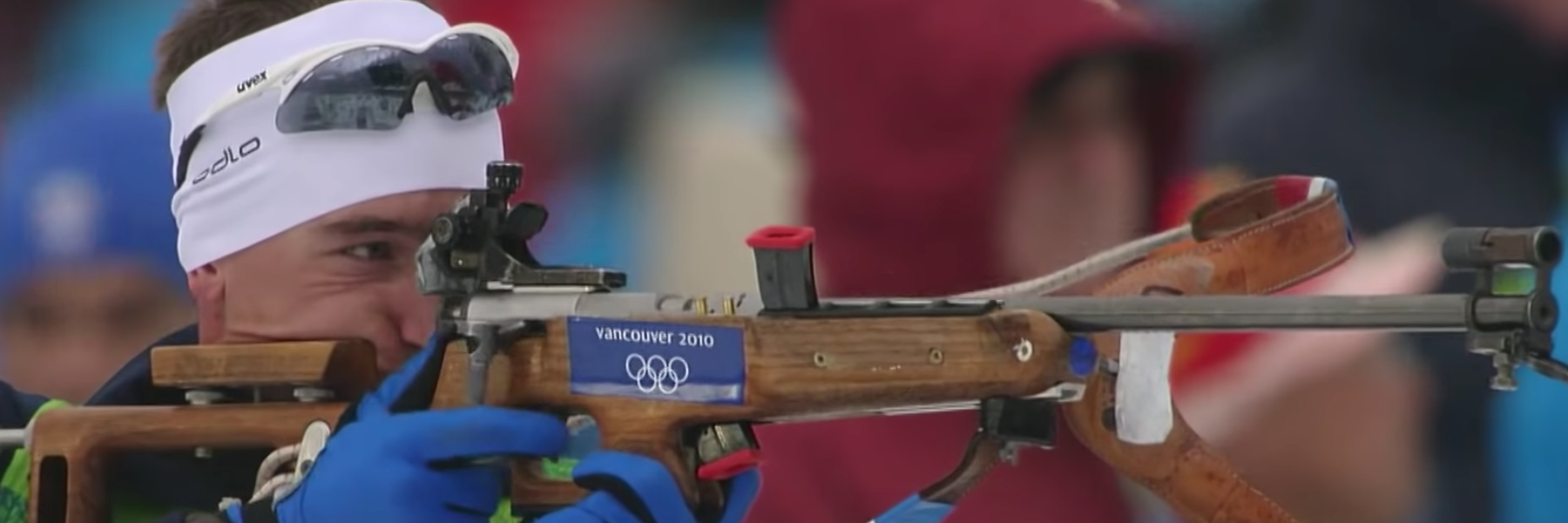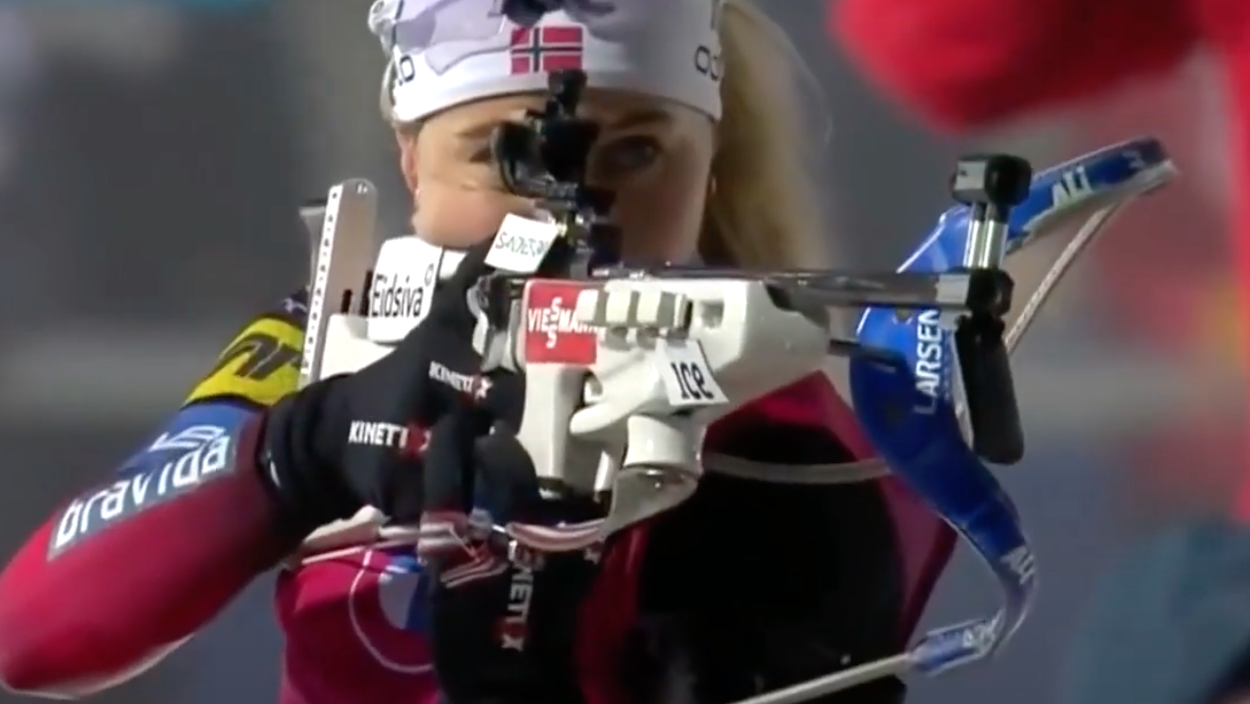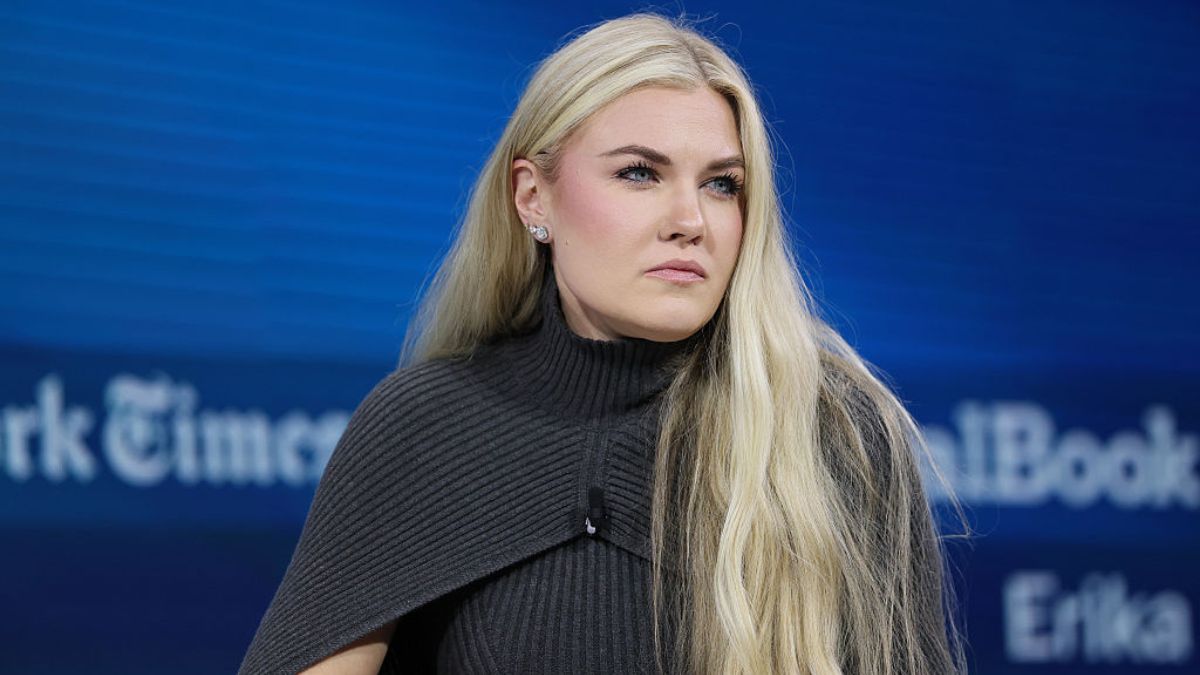The biathlon is one of the Winter Olympics‘ most popular competitions — a race that brings cross-country skiing and rifle shooting together. The race is divided into rounds, in which contestants can improve their race times based on the success of their shooting rounds.
While the rules seem simple, the sport requires a great amount of physical skill, strength and endurance, all while under pressure from the clock and the conditions.

History of the biathlon
The biathlon emerged in Scandinavia due to the culture of skiing in the region, as an alternative type of military training and to help aid the defense of local communities. Over time, the practice became more organized as rules were formed and biathlon clubs formed — like the Trysil Rifle and Ski Club, one of the oldest known ski clubs, founded in 1861 in Norway.
The biathlon had some early representation in the Olympics under a different name. “Military Patrol” was an unofficial demonstration (with no medals awarded) at the 1924, 1928, 1936 and 1948 Olympic games, very similar to the Norwegian past-time of skiskyting (literally ski shooting) — what we now know as the biathlon.

Biathlon in the Olympics
The Biathlon was first admitted as an official Olympic competition at the 1960 Winter Olympics in Squaw Valley, CA, with Sweden, Finland and the USSR winning medals, starting a trend that continues to this day. Of the 257 Olympic medals given out in Biathlon events, 253 have gone to European nations, with Canada (3) and Kazakhstan (1) getting the remainder.
After starting in 1960 with just the men’s 20km individual, the biathlon now has 11 events including women’s, sprints, relays and mixed races. It is one of five sports at the Winter Olympics with more than ten events, and is a mainstay of the Winter Games.
Biathlon’s greatest moments
The Biathlon (like most races) sets itself up for dramatic endings, with players missing out on medals by a few seconds. One of the best examples of this is from 2018, when biathlete Martin Fourcade became the most successful French Olympian of all time by winning gold in the Men’s 15 km Mass Start in Pyeongchang.
Fourcade had been a champion for years, and entering this race, he had a chance to make history for his country by winning gold. Heading into the final stretch of the race, Fourcade was neck-and-neck with two others, but the trio became a duo when Erik Lasser missed two of his shots. Fourcade entered the final skiing stretch just barely ahead of Simon Schempp and ended up winning the race by 14 centimeters, despite Schempp gaining ground on him all the way up to the moment they crossed the finish line.
Endings like this are so good that they feel unrealistic when used in fictional stories.
2022 biathlon preview
Historical powerhouses Norway and Germany will be strong once again this Winter Games, with Norway the overall favorite on the men’s and women’s side.
Fourcade will not be competing following his 2020 retirement, which will make for a more open competition than in years past. Norwegian Johannes Thingnes Boe has been among the best this decade in the men’s World Cup and is one of the big favorites in Beijing.
The women’s field should be more open too without German Laura Dahlmeier in the competition. Norwegian Tiril Eckhoff is favored, looking for her first Olympic gold medal since 2014. Eckhoff has been dominant over the past two seasons in the World Championships and the World Cup, most notably winning three gold medals in the 2021 World Cup.

2022 Biathlon Schedule
Here is the full schedule for Biathlon events at the 2022 Winter Olympics:
- Feb. 5 – Mixed 4 x 6 km relay
- Feb. 7 – Women’s 15 km individual
- Feb. 8 – Men’s 20 km individual
- Feb. 11 – Women’s 7.5 km sprint
- Feb. 12 – Men’s 10 km sprint
- Feb. 13 – Women’s 10 km pursuit, Men’s 12.5 km pursuit
- Feb. 15 – Men’s 4 x 7.5 km relay
- Feb. 16 – Women’s 4 x 6 km relay
- Feb. 18 – Men’s 15 km mass start
- Feb. 19 – Women’s 12.5 km mass start










Published: Feb 1, 2022 07:45 am